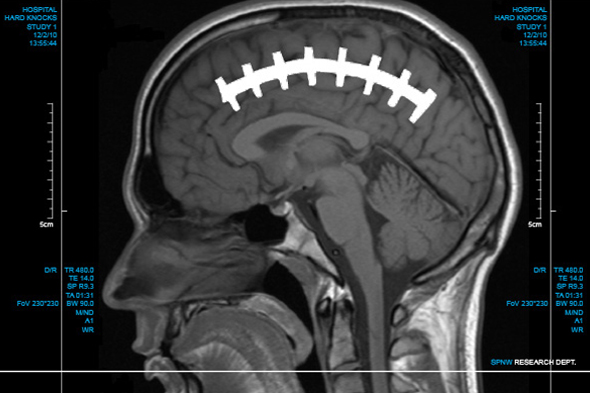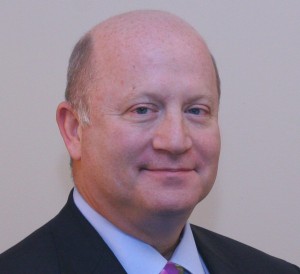
The most significant health problem in the U.S. militarys two current wars is also the biggest health threat to the viability of the NFL.
The man both institutions asked for help runs the best brain-repair shop in Seattle.
But the national message of urgency surrounding brain trauma injuries (BTI) including sports concussions was not delivered most persuasively to Dr. Richard Ellenbogen by generals or commissioners.
When his then-15-year-old son, Zach, was concussed in a football game a couple of years ago, Ellenbogen was confronted by his wife, Sandy, a nurse.
She told me, he said, If you dont get a handle on this, youre not going to get any mothers to let their kids play. This game is about done unless you can convince the mothers of America that you can make it safer.
She kicked my butt.
So when NFL commissioner Roger Goodell finally realized that the pervasiveness of concussions throughout sports was a genuine threat to pro footballs welfare, he reached out to an eager, able volunteer in confessed football addict Ellenbogen.
Chief of neurosurgery at Harborview Medical Center, Ellenbogen since March also has been the new co-sheriff of the NFLs important, albeit belated, campaign to lessen the risk of concussions.
But he insists he is not a house man, the accusation that was made against the medical professionals that he and Dr. Hunt Batjer, co-chair of the leagues head, neck and spine committee, replaced.
I get zero money from the teams or the league, said Ellenbogen recently in his hospital office with an expansive view of downtown and the stadiums. I never talk to the coach. I talk to trainers and the team physician.
No coach calls me and says, You better get my player back to me. Ive never been pushed or forced into any decision. But my position gets team doctors off the hook.
But Ellenbogens vigorous independence doesnt mean the rest of the sports world has gone along.
The culture is still there, and were trying to change it, he said. Whats hard for us to see at the high school and college level is doctors who are fans.
I love football, but my job is to remember the player is a patient. If I see a Seahawk, my first priority is not to return him to duty.
Long before the NFL discovered him, Ellenbogen wondered when the public would become aware of the steady increase in BTI among athletes who too often have been returned to play before the brain has recovered from a concussive blow.
According to statistics obtained by the Brain Injury Association of Washington, (www.braininjurywa.org) concussions are the leading cause of death and disability among males in this state between the ages of 15 and 24.
Research by the Pentagon also shows that BTI, not gunshots, is the most pervasive source of injury among soldiers fighting in Iraq and Afghanistan, and a major factor the huge incidence of PTSD (post-traumatic stress disorder). Soldiers in close proximity to improvised explosive devices (IEDs) often are returned to duty too quickly because neither soldier nor commander fully understand the consequences of an episode easily dismissed as having ones bell rung.
Ellenbogen and Goodell recently had lunch with the Armys vice chief of staff, Gen. Peter Chiarelli, who shocked them both with his story of how few soldiers under the old concussion treatment strategy ever came back to duty.

About zero, Ellenborgen quoted Chiarelli. The practice had been to return soldiers to the front lines as soon as they seemed functional, despite the fact that some may have experienced up to a half-dozen IED explosions in a relatively short time. When they became nearly helpless, they were sent back to Walter Reed Army Hospital in Washington. By then, chances of recovery in a lifetime, much less a tour of duty, were remote.
Now, Chiarelli, a Seattle University graduate, said soldiers are returning to duty by the hundreds because the Army is following a stricter regimen of tests performed by medics and physicians.
Upon failing the test, the instruction for each soldier derives its description from football: “Take a knee”. In other words, no more contact. A soldier goes to the militarys version of a sideline, for days or weeks, until he or she demonstrates full recovery.
There is obviously little to prevent concussions, and no treatment or cure. The brains ability to repair itself requires rest and absence of further blows.
But the warrior culture of soldiers, football players and many other athletes resists the command to rest because of the stigma attached to invisible injury to the brain.
For the longest time, the NFL resisted the growing evidence of dementia and related disability among its retired players. Even though for 14 years there was a brain trauma committee, the adjective mild was part of its formal title. Military leaders were equally resistant. As Ellernbogen put it:
What does government do best? Deny.
But science, together with the pressure of a new collective bargaining agreement addressing long-term health care for retired players, have combined with potential litigation and media stories about youth-sports concussions to create what Ellenbogen termed a perfect storm. And that forced Goodell, unlike his predecessor, Paul Tagliabue, to act on the issue.
Sufficiently worried about the legal, financial and social implications of the growing anxiety over concussions, the NFL did something very unusual in October it changed its playing rules in mid season.
Some say the new rules have changed football forever.
After several brutal helmet-to-helmet collisions in Week 6, the NFL came out with points of emphasis that lowered the threshold for penalty-worthy hits and ratcheted up punishments. The controversy was on. Not only were the changes difficult to interpret for already beleaguered officials, the players union led the resistance. Many felt the rules constrained tacklers that so recently were rewarded. The games big hitters were being handcuffed, it was said, and violence-loving America was being denied its guilty pleasure of civilized mayhem.
The skirts need to be taken off in the NFL offices, union president Kevin Mawae, a former Seahawks center, told ESPN radio despite the fact that the purpose of the rules changes was to protect the long- and short-term health of players.
Baltimore linebacker Ray Lewis, perhaps the games most fierce hitter, was even more disdainful.
My goodness, you cant do anything anymore its a tragedy,” Lewis, a 15-year pro, told Sports Illustrated in a lengthy series of stories on the concussion controversy. Look at what weve done to the greatest gladiator sport weve ever played. When you step on this gridiron theres something coming with it. Thats why you strap up the chinstrap. You sacrifice your body you sacrifice everything you got.
Im telling you its a bitter subject.
Yet, if Lewis wants to know bitterness, there are plenty of his retired predecessors who can offer painful evidence that sacrificing everything is not worth it.
And now comes the growing evidence that concussions in young athletes have long been treated in a similar uninformed fashion.
Next week Ellenbogen is attending in New York an NFL committee meeting on equipment standards and designs to see whether new technology or better rules can help mitigate incidences and outcomes.
Instead of dealing with the vagaries of political opinion and the media coverage, were trying to preserve sports, he said. Thirty million kids are playing sports. Do we want sports to go away? No. The only way we know to preserve sports is to make traumatic brain injury a lesser risk. Simple as that.
Its happening in all sports, professional, high school and youth sports the sport with the highest incident rate is girls soccer. We dont know why.
But the NFL is the lightning rod. That is where change will start for all levels. People like me cant move the needle anywhere. When Goodell stands up, everybody listens.
And Goodell listens to Ellenbogen, enough to change in a fundamental way, at mid season, how the game will be played.
Ellenbogen made clear that he and the committee offered no recommendations on football rules or punishments. Thats between the league and the union. Nor has the committee adopted new technologies because the research is not yet in.
What has happened is the message has been heard, from high school gyms to the Super Bowl. Mawae, Lewis and the other warriors who believe in their indestructibility, are doing brethren, and sports-playing kids, a grave disservice by not listening.
Whether it takes a $100,000 fine or an afternoon at Walter Reed, awareness has to be embraced at any cost. Because the cost of neglect has already been way too high.
